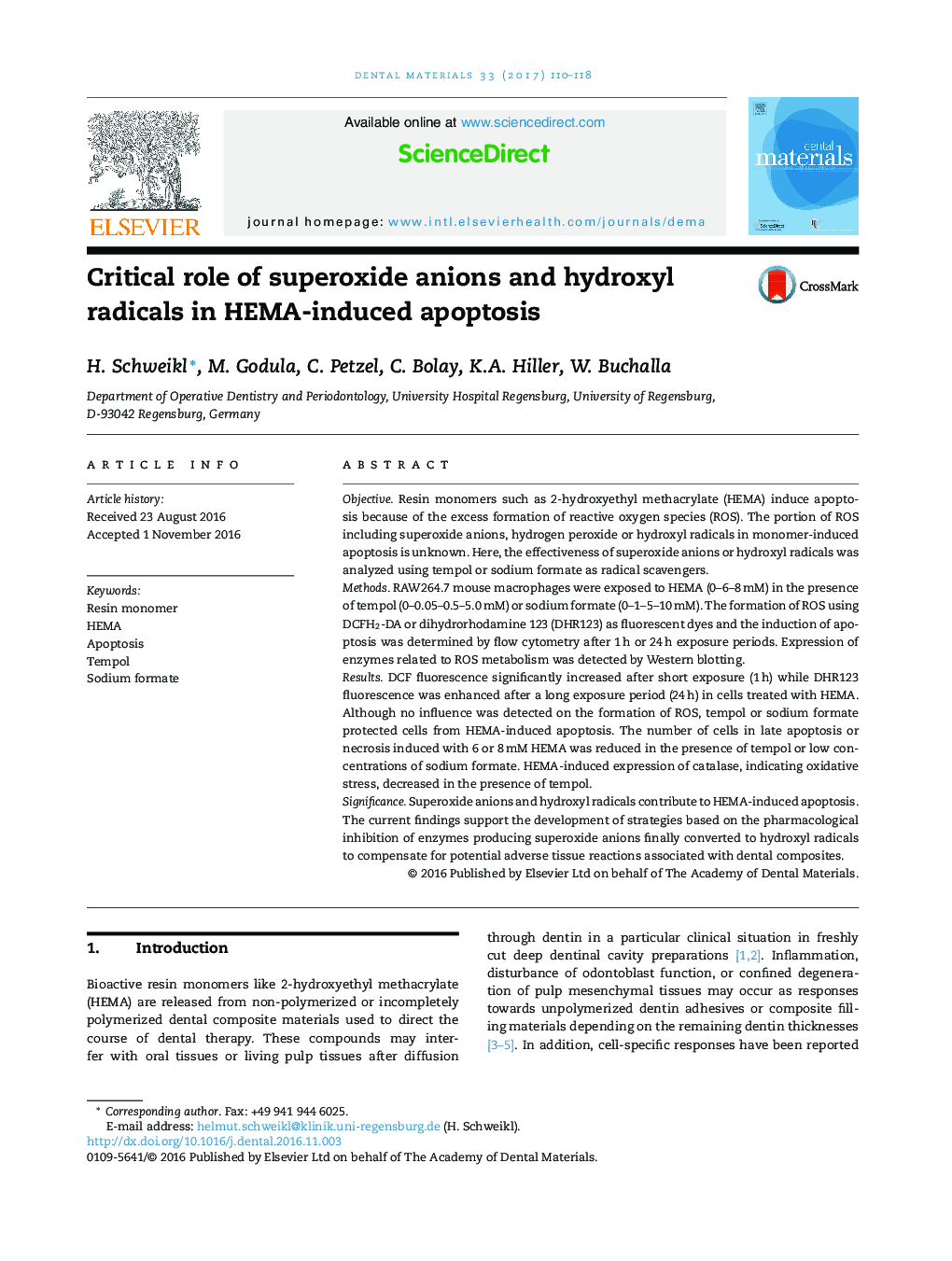| کد مقاله | کد نشریه | سال انتشار | مقاله انگلیسی | نسخه تمام متن |
|---|---|---|---|---|
| 5433163 | 1398055 | 2017 | 9 صفحه PDF | دانلود رایگان |

ObjectiveResin monomers such as 2-hydroxyethyl methacrylate (HEMA) induce apoptosis because of the excess formation of reactive oxygen species (ROS). The portion of ROS including superoxide anions, hydrogen peroxide or hydroxyl radicals in monomer-induced apoptosis is unknown. Here, the effectiveness of superoxide anions or hydroxyl radicals was analyzed using tempol or sodium formate as radical scavengers.MethodsRAW264.7 mouse macrophages were exposed to HEMA (0-6-8Â mM) in the presence of tempol (0-0.05-0.5-5.0Â mM) or sodium formate (0-1-5-10Â mM). The formation of ROS using DCFH2-DA or dihydrorhodamine 123 (DHR123) as fluorescent dyes and the induction of apoptosis was determined by flow cytometry after 1Â h or 24Â h exposure periods. Expression of enzymes related to ROS metabolism was detected by Western blotting.ResultsDCF fluorescence significantly increased after short exposure (1Â h) while DHR123 fluorescence was enhanced after a long exposure period (24Â h) in cells treated with HEMA. Although no influence was detected on the formation of ROS, tempol or sodium formate protected cells from HEMA-induced apoptosis. The number of cells in late apoptosis or necrosis induced with 6 or 8Â mM HEMA was reduced in the presence of tempol or low concentrations of sodium formate. HEMA-induced expression of catalase, indicating oxidative stress, decreased in the presence of tempol.SignificanceSuperoxide anions and hydroxyl radicals contribute to HEMA-induced apoptosis. The current findings support the development of strategies based on the pharmacological inhibition of enzymes producing superoxide anions finally converted to hydroxyl radicals to compensate for potential adverse tissue reactions associated with dental composites.
Journal: Dental Materials - Volume 33, Issue 1, January 2017, Pages 110-118